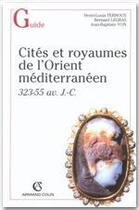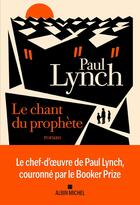Résumé:
Ce volume vise à mettre en relief les caractères originaux de Palmyre qui passa d´une société à base tribale à une civilisation qu´influence de plus en plus l´Empire romain. Il utilise pour cela l´épigraphie greco-latine, l´épigraphie sémitique et les donnees archéologiques. La ville partage... Voir plus
Ce volume vise à mettre en relief les caractères originaux de Palmyre qui passa d´une société à base tribale à une civilisation qu´influence de plus en plus l´Empire romain. Il utilise pour cela l´épigraphie greco-latine, l´épigraphie sémitique et les donnees archéologiques. La ville partage beaucoup de traits avec le reste de la province romaine, malgré sa position excentrée et ses contacts constants avec des zones moins hellénisées, mais reste empreinte des cultures « orientales » (araméenne, mais aussi arabe, iranienne, babylonienne). On peut ainsi définir l´identité de la ville et de ceux de ses habitants qui apparaissent le mieux, les notables. Ils participaient au fonctionnement de la cité grecque de Palmyre : on peut reconstituer des carrières et des familles qui monopolisaient la scène publique. L´aspect classique, gréco-romain, s´accompagne de la permanence de la culture locale (langue, art, religion, onomastique). Le commerce caravanier qui fit la gloire de Palmyre est un autre lieu où étudier le rôle des notables et leur influence, hors de la cité et dans l´Empire. À Palmyre même, on peut cartographier leur position sociale grâce à ce qu´ils ont bâti selon les modalités propres à l´évergétisme de Palmyre. Les notables étaient de plus entourés de catégories de population plus discrètes dans les sources (femmes ou affranchis), mais dont l´existence et l´activité n´etaient pas négligeables (ainsi la reine Zénobie). Les notables, par-delà leur propre vie, mettaient en scène la puissance de leur famille, par des constructions de tombeaux. Ces monuments sont aussi le signe d´une pénétration peut-être de plus en plus forte de coutumes qui ont leur origine dans l´Empire romain, sans que disparaissent en aucune manière les traditions originales, en premier lieu l´usage de l´araméen. This essay uses Greek and Latin epigraphy (thus preparing a corpus), Palmyrene Semitic epigraphy and the archaeological studies concerning the site to show the originality of Palmyra, which was a tribal society and became more and more influenced by the Roman Empire. The city shares some characteristics with the Roman province, despite its marginal position and its contacts with less hellenized areas, but is under a strong influence of oriental "cultures" (Aramaic, as well as Arabic, Iranian, Babylonian). The identity of the city can be defined and its leading inhabitants, notables who were part of the Greek city of Palmyra, are sometimes well-known. One can reconstruct their civic careers and note the prevailing role of some families. This rather classical aspect is only a part of the whole, with the permanence of local culture (language, art, religion, onomastic) being the other part. Caravan trade, one of the glories of Palmyra, is another area where the role of the notables, their influence, is to be seen, outside of the city and in the Empire. In Palmyra itself, it is possible to draw a map of their social position, thanks to their monuments built following the special ways of evergetism existing there. Around the leading citizens was an entourage of people less apparent in the epigraphic evidence (women and freedmen), but they are not to be underestimated as shown by the example of Zenobia. Notables, beyond their own life, used to put on stage the power of their family, by the construction of tombs. Those monuments are also signs of the penetration of ways that originated in the Roman Empire, which does not mean that the local traditions were disappearing, as shown by the constant use of Aramaic.
















